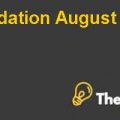Introduction of Report
This is an SPSS report and all the analysis is based on a quantitative analysis which would be only performed in SPSS. Different hypothesis tests would be conducted on the target dataset BSA (British Social Attitudes). The data is one of the datasets that measures the attitudinal movements of the respondents and it complements the information gathered through the large scale government surveys to determine the facts and the behavior patterns related to different political issues. We have generated three different hypotheses related to three different topics and then we have applied the required tests based on specific research questions, null and alternative hypothesis and analyzed those results in detail for each hypothesis.
Hypothesis Test # 1 (Pearson Correlation Test)
In our first hypothesis test, we determine the statistical association between the respondent’s obesity, measured by their BSA (WtFactor) with how often they travel by cars for a distance of less than 2 miles in each week (shrtjrn). The research question that we would be answering in this hypothesis test is as follows:
Research Question
Is there any statistical association between obesity of the respondents to their frequency of using cars for short distances?
The alternative and null hypothesis for this test is as follows:
Ho: There is no statistical association between obesity of the respondents to their frequency of using cars for short distances.
H1:There is statistical association between obesity of the respondents to their frequency of using cars for short distances.
Quantitative Analysis SPSS Report Harvard Case Solution & Analysis.
Identification of Dependable and Independent Variable
The dependent variable in this case is the obesity of the respondents or the weight of the respondents and the independent variable is the frequency of using cars for short distances. These have been chosen to check for association as a higher frequency of using cars might have a positive and significant correlation with the weight or obesity of the respondents. Because as they travel more by cars, they walk less and gain more weight.
Identification of Outliers
We have checked the dependent variable for the outliers, however, since the dependent variable is measured at a nominal scale, therefore, the WtFactor variable might not have any outliers as the weight is measured in BSA. For instance, the results are shown below:
| Extreme Values | ||||
| Case Number | Value | |||
| Final BSA weight | Highest | 1 | 2391 | 4.9095 |
| 2 | 2090 | 3.8098 | ||
| 3 | 2748 | 3.6821 | ||
| 4 | 2442 | 3.6373 | ||
| 5 | 785 | 3.3902 | ||
| Lowest | 1 | 2272 | .2655 | |
| 2 | 1950 | .2732 | ||
| 3 | 2119 | .2832 | ||
| 4 | 2216 | .2872 | ||
| 5 | 1196 | .2920 | ||
As we can see above, histogram for the obesity variable is not normally distributed and it is curved leftwards. The extreme values table shows there are specific extreme values in the dataset dependent variable of weight of respondents, however, since this is a nominal variable in this case, therefore, we ignore these values and continue with our analysis.
Descriptive Statistics
We have now generated descriptive statistics for the weight and frequency of car use variable as shown below:
| Statistics | |||
| Final BSA weight | How many journeys of less than 2 miles do you make by car in a typical week: Version B | ||
| N | Valid | 4328 | 889 |
| Missing | 0 | 3439 | |
| Mean | 1.000000 | 24.50 | |
| Mode | .9146 | 97 | |
This is just a sample partical work. Please place the order on the website to get your own originally done case solution.











